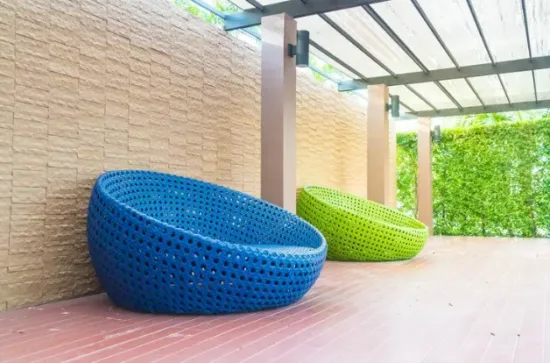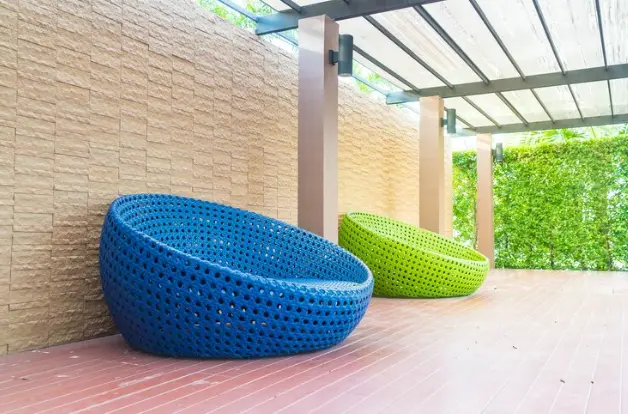
Creating a functional outdoor room is a great way to extend your living space and make the most of your yard or garden. Whether you envision a cozy spot for relaxation, a stylish space for entertaining guests, or a multi-functional area for family activities, designing an outdoor room requires thoughtful planning. By following a few simple steps, you can transform your outdoor area into a functional and beautiful space.
1. Determine the Purpose of Your Outdoor Room
Before diving into the design, consider how you want to use your outdoor space. The purpose of the room will guide all of your design decisions. Some common uses for outdoor rooms include:
- Dining and Entertaining: If you love hosting parties or family dinners, your outdoor room should include space for a dining table, chairs, and perhaps a grill or outdoor kitchen.
- Relaxation and Lounging: If you prefer a quiet retreat, opt for comfortable seating like lounge chairs or outdoor sofas. You can also incorporate features like a fire pit, hammock, or water feature to create a serene atmosphere.
- Work or Study Space: Some people use outdoor rooms as a peaceful place to work or study. If this is your goal, prioritize privacy, shade, and a comfortable seating arrangement with space for a laptop or reading materials.
- Play Area for Children: If you have kids, you may want to design an outdoor space where they can play safely. This could include grassy areas, a sandbox, or other kid-friendly features.
Once you’ve decided on the primary function of your outdoor room, it will be easier to select the right layout, furniture, and décor. Garden rooms Chelmsford providers can give you additional insights into local trends and uses of outdoor spaces.
2. Choose the Right Location
The location of your outdoor room is just as important as the design itself. Ideally, your outdoor room should be easily accessible from your home, especially if you plan to use it for dining or entertaining. Consider the following factors when choosing a location:
- Proximity to the House: Positioning your outdoor room close to the kitchen or living room will make it more convenient to use, especially for dining and social gatherings.
- Sunlight and Shade: Think about how much sun the area receives throughout the day. If it’s too sunny, you may need to incorporate shade structures like pergolas, umbrellas, or shade sails. On the other hand, if the space is too shaded, it might feel cold or uninviting.
- Wind and Weather Protection: Consider how to protect your outdoor room from the elements. If you live in a windy area, you may need to include windbreaks like walls, fences, or tall plants. For areas with frequent rain, a covered patio or retractable awning might be necessary.
- Privacy: If your outdoor room is visible to neighbors or passersby, you may want to add elements like privacy screens, tall plants, or fencing to create a more intimate environment.
3. Create a Layout and Define Zones
Just like indoor rooms, outdoor rooms benefit from thoughtful layouts. Depending on the size of your space and how you plan to use it, you may want to create different zones for various activities. For example:
- Dining Area: Place your dining table and chairs in a specific part of the outdoor room. Make sure there’s enough space for people to comfortably move around while seated.
- Lounge Area: If you want a space for relaxation, set up a separate zone with outdoor sofas, lounge chairs, or a hammock. You could also add a coffee table or side tables for drinks and snacks.
- Cooking Area: If you’re including an outdoor kitchen or grill, position it in a location that is easy to access but doesn’t interfere with the dining or lounge areas.
- Fire Pit or Fireplace: A fire feature can serve as the focal point of your outdoor room. Surround it with seating to create a cozy atmosphere.
By defining different zones, you can create a space that feels organized and functional, even if your outdoor area is small.
4. Select Durable, Comfortable Furniture
Outdoor furniture plays a critical role in the functionality and comfort of your outdoor room. It’s important to choose furniture that is both stylish and durable, as it will need to withstand the elements. Here are some tips for selecting the right furniture:
- Weather-Resistant Materials: Opt for furniture made from materials like teak, aluminum, wrought iron, or synthetic rattan, which are designed to handle sun, rain, and wind. Cushion fabrics should be weatherproof, fade-resistant, and quick-drying.
- Comfort: Outdoor seating should be as comfortable as your indoor furniture, especially if you plan to spend long hours relaxing or entertaining. Look for plush cushions, ergonomic chairs, and sturdy, supportive seating.
- Space-Saving Furniture: If your outdoor room is small, consider multifunctional furniture like foldable tables, stackable chairs, or benches with built-in storage. This will help you maximize space without sacrificing comfort.
- Easy Maintenance: Outdoor furniture can get dirty quickly due to exposure to dust, rain, and other elements. Choose furniture that is easy to clean and maintain. Furniture covers can help protect your investment when not in use.
5. Add Shade and Shelter
To make your outdoor room comfortable year-round, it’s important to incorporate shade and shelter. This is particularly important in areas that receive strong sun or frequent rain. Consider the following options:
- Pergolas and Gazebos: A pergola or gazebo can provide partial shade and create a defined structure for your outdoor room. You can add climbing plants or retractable covers for extra sun protection.
- Umbrellas and Shade Sails: For a more flexible solution, use large outdoor umbrellas or shade sails that can be adjusted or removed as needed. They are ideal for smaller spaces or areas that only require shade during certain times of the day.
- Retractable Awnings: A retractable awning offers the best of both worlds, providing shelter when you need it and retracting to let the sun in when desired. Awnings are particularly useful for outdoor rooms adjacent to the house.
6. Incorporate Lighting for Evening Use
Outdoor lighting is essential for creating a functional space that can be used after sunset. When designing your lighting scheme, think about both practical and aesthetic needs:
- Ambient Lighting: Soft, ambient lighting creates a relaxing atmosphere. String lights, lanterns, or LED strip lights can provide a warm glow without being too harsh. Solar-powered lights are an eco-friendly option that can reduce energy costs.
- Task Lighting: If you have an outdoor kitchen or dining area, you’ll need brighter task lighting to illuminate these spaces. Install overhead lights, spotlights, or built-in fixtures for areas where you’ll be cooking or eating.
- Accent Lighting: Use accent lighting to highlight key features of your outdoor room, such as pathways, plants, or water features. Small landscape lights or LED uplights can add depth and dimension to your space.
7. Incorporate Natural Elements and Décor
To make your outdoor room feel cozy and inviting, add natural elements and personal touches. Greenery, flowers, and natural textures can make the space feel more connected to the outdoors:
- Plants and Planters: Incorporate potted plants, hanging baskets, or garden beds around your outdoor room. Plants like succulents, ferns, and flowering shrubs can add color and life to the space.
- Outdoor Rugs and Textiles: A weatherproof outdoor rug can define zones and add warmth to your outdoor room. Choose rugs, cushions, and throws made from outdoor-friendly fabrics that resist moisture and fading.
- Decorative Elements: Personalize your outdoor room with decorative accents like sculptures, lanterns, wind chimes, or outdoor art. These touches add character and make the space feel more like an extension of your home.
Conclusion
Designing a functional outdoor room is a rewarding project that can enhance your lifestyle and increase the usability of your outdoor space. By determining the purpose of your room, choosing the right location, creating a layout, and selecting durable furniture, you can create an outdoor room that’s both practical and stylish. Don’t forget to add shade, lighting, and natural elements to complete the space. With thoughtful planning and attention to detail, you’ll soon have a beautiful, functional outdoor room that you can enjoy year-round.

